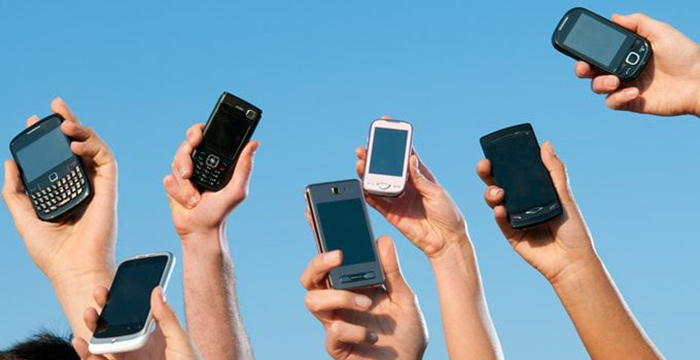Mobile phone technology has progressed significantly since ‘cell phones’ were first invented. The first modern portable handset was invented by Dr. Martin Cooper in 1973. Motorola sought to build a personal telephone that belonged to an individual rather than a home or a desk.
1973 – 1980s – 1G
Dr. Cooper was an engineer and general manager at Motorola at the time he invented the cell phone. The prototype developed by Dr. Cooper weighed almost two and a half pounds and was larger than today’s office phones. In 1973, he placed the first call from a portable phone – to a rival engineer at Bell Labs.
After Dr. Cooper’s revolutionary creation, it took nearly ten years for mobile phones to reach the market. Motorola rolled out the first commercial mobile phone in 1983, the DynaTAC 8000X, costing $3,995. The cost of Motorola’s first phone today would be $9600 after accounting for inflation! Mobile phone technology was relatively underdeveloped at the time, operating on an analogue cellular network.
1990s – Digital Cellular
Consistent with the rapid technological advancements of the 1990s, cellular phone technology improved exponentially. In the 1990s, a 2nd generation of mobile phone systems was created. Two systems vied for global supremacy: the U.S. developed CDMA standard and the European developed GSM standard.
Along with the new ways of transmitting information, cellular phone technology was advancing. Smaller batteries and improved energy-efficiency devices enabled companies to create smaller cell phones. While the brick-sized Motorola DynaTAC 8000 weighed 28 ounces, newer phones in the 90s weighed between 3.5 and 7 ounces.
The 2nd generation of phone systems introduced text messaging and the ability to access web content from mobile phones. Custom ringtones were incredibly popular among mobile phone users. Of course, SMS/text messaging has been a huge success. ‘Texting’ is the preferred medium for communications among millennials. In addition, four out of five people use texting for business communications.
Nokia was a leader in the mobile phone industry during the 1990s. Nokia launched an early mobile phone with vibrations, and later introduced ‘Snake’ to cell phone users.
The first full internet service on a cell phone was introduced in 1999. However, this internet access was different from accessing the mobile internet.
2000s – 3G/4G
During the 1990s, cell phone use started to become commonplace and the demand for cellular data increased. More people sought access to the internet from their mobile phones and people sought faster data speeds.
Engineers in the industry began developing ‘Mobile Broadband’ to satisfy mobile phone users. 2G technology utilized circuit switching for data transmission. The major change from 2G to 3G was the use of packet switching to replace circuit switching. It wasn’t until 3G technologies that mobile phone users could access the mobile internet.
In 2007, Apple rolled out the first iPhone in the United States. The iPhone was a revolutionary device with full internet access, a touch screen and all the functions of a traditional camera phone and mp3 player. Apple has continued to make improvements to the iPhone and there are now more than 100 million iPhone in the United States.
By 2009, engineers began developing a 4th generation of technology to accommodate bandwidth consuming applications like streaming media. The 4th generation is called Native IP Networks.
Cell Phones Today
Like most electronics, improvements in mobile phone technology came about exponentially. Today’s cell phones have capabilities that are likely beyond the imagination of Dr. Martin Cooper. There are almost as many cell-phone subscriptions as there are people on this earth. The advancement of mobile phone technology is bound to continue in future years. What innovations would you most like to see in coming years?


